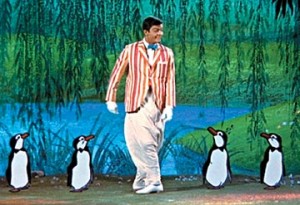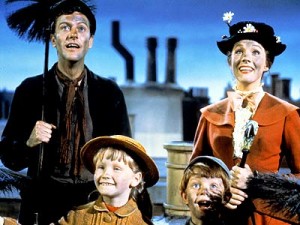The Lake House
Posted on June 19, 2006 at 8:00 am
B| Lowest Recommended Age: | 4th - 6th Grades |
| MPAA Rating: | Rated PG for some language and a disturbing image. |
| Profanity: | None |
| Alcohol/ Drugs: | Drinking, scenes in bar |
| Violence/ Scariness: | Non-graphic injuries, deaths, scenes in hospital |
| Diversity Issues: | Diverse characters |
| Date Released to Theaters: | 2006 |
| Date Released to DVD: | 2006 |
| Amazon.com ASIN: | B000HEWEE4 |
In honor of Sandra Bullock’s best all-time movie opening with “The Proposal,” this week’s DVD pick is another Bullock favorite.
Movie romances must have two things: an obstacle to keep the apart and a reason to root for them to get together. This has both. Keanu Reeves and Sandra Bullock have so much chemistry (perhaps based in part on our fond memories of
Yeah. Don’t try to think it through too thoroughly. Just go with it. The tenderness of the story just might make it worthwhile.
Alex and Kate are connected by the title residence. It is a house on the lake, and by that I mean ON the lake. It is on stilts, made all of glass. The view is breathtaking but it is isolated. Kate moves out, leaving a note for the new occupant about forwarding her mail. But he is confused. As he moves in, no one has lived there for years. She refers to pawprints and a box that he can’t see. And the date on her note is two years in the future.
It seems the mailbox is a time/space continuum wormhole. Or maybe it is enchanted. The movie does not waste any time with explanations. It just shows us Kate and Alex, revealing themselves to each other through their letters and to us through their interactions with their friends, family, and colleagues. We see them grow toward each other, the very distance and strangness of the connection creating a place for each of them to thaw a part of them that has been isolated and frozen. We realize how — and why — destiny is bringing them together, and when it does, it is sweet and satisfying.
Bullock lowers the pilot light on her usual twinkle and allows herself to be vulnerable and even a little aloof. Reeves turns up the pilot light a little bit, giving us more than his usual blankness, letting us feel how much he wants to be with Kate and what he is willing to do to make it happen. If the two elements are there, a romantic story has an essential rightness that makes is possible, even a pleasure, to let ourselves believe in it. So, don’t ask whether there could be a house made of glass on top of a lake or whether Kate kept driving back to the mailbox. Just enjoy it.
Parents should know that characters drink (scenes in a bar). A boyfriend and girlfriend break up when she kisses someone else. A character is hit by a bus (offscreen) and dies and there is another sad death. Characters use some mild language.
Families who see this film should talk about how the lake house was a metaphor for Kate and Alex, giving them a view of great beauty but separating them from it.
Families who enjoy this movie will also enjoy other time-travel fantasies like Frequency and Somewhere In Time and another kind of story about love through letters, 84 Charing Cross Road. They will also enjoy
.




